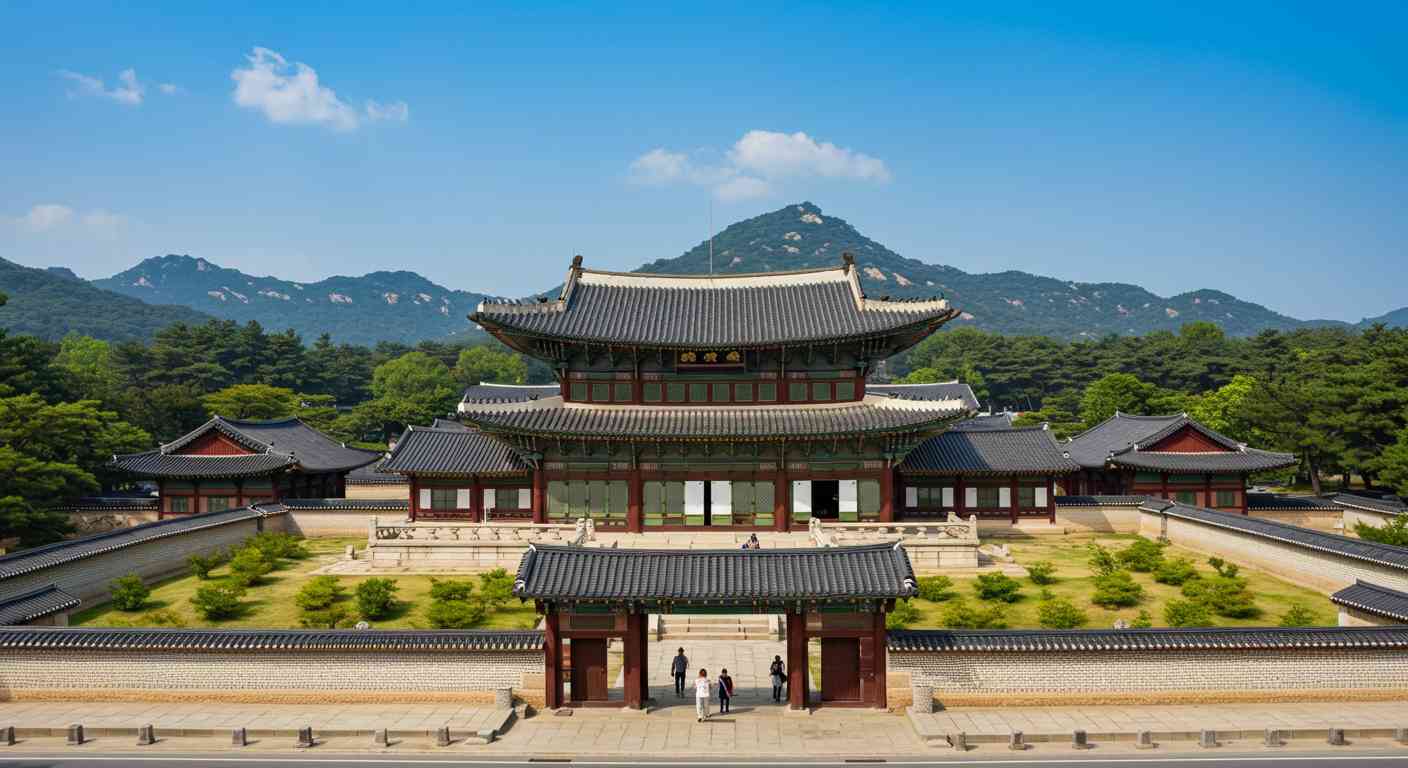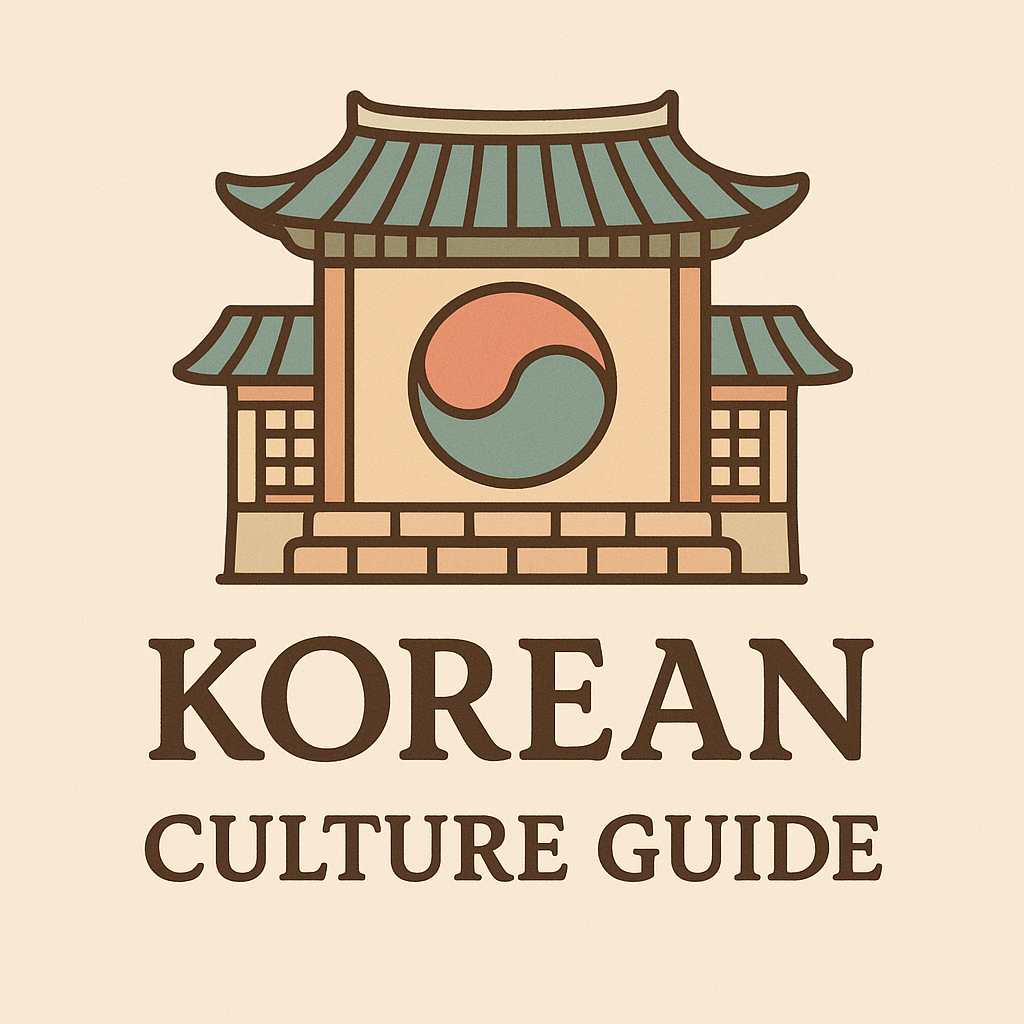-
contents
The design of Korean royal palaces goes beyond architectural grandeur; they are a manifestation of cosmic harmony. Rooted in Confucian philosophy and ancient Korean beliefs, these palaces were meticulously constructed to align with the natural and celestial world, creating a space that embodied balance, power, and spiritual significance.
Korean royal palaces are not simply architectural masterpieces, but profound expressions of cosmic harmony. The design of these palaces, notably seen in the Gyeongbokgung and Changdeokgung, reflects a deep-rooted connection between the earthly and celestial realms. Every stone, every structure, and every garden was meticulously planned to embody harmony not just within the palace but with the natural world and the universe itself. In Korean culture, this alignment of architecture with cosmic principles isn’t just a decorative feature; it’s a manifestation of the royal family's divine right to rule, grounded in the philosophies of Confucianism and Korean shamanistic traditions. Understanding why Korean palaces were designed with cosmic harmony in mind unveils not just the beauty of these spaces, but also the profound spiritual significance embedded within their construction.
The Philosophy of Cosmic Harmony in Korean Architecture
The concept of cosmic harmony, or Cheongja, is deeply ingrained in Korean architectural principles. This belief stems from ancient Confucian and Buddhist teachings, where the balance of nature, the celestial bodies, and human activity were viewed as interconnected. The palaces were designed to reflect this balance, where the architecture itself was seen as a microcosm of the universe.
Central to this belief is the geomancy principle, or Pungsu, which emphasizes the influence of natural surroundings on human life. In the design of Korean palaces, the positioning of buildings was guided by these geomantic principles. The placement of palaces like Gyeongbokgung was not random; the surrounding mountains were chosen for their protective qualities and their symbolic connection to the "heavenly" realm. The palaces were aligned with these mountains in a way that mirrored the cosmic order, ensuring a harmonious relationship between the royal family and the natural world.
The Symbolism of Spatial Arrangement
In the design of royal palaces, the layout itself tells a story of power, balance, and spiritual meaning. The palaces were typically divided into three distinct sections: the outer court, the inner court, and the royal quarters. This division was more than just functional—it represented a cosmic hierarchy, with the outer court symbolizing the earthly realm, the inner court representing the human realm, and the royal quarters embodying the celestial realm.
In Gyeongbokgung, for example, the main throne hall, Geunjeongjeon, is located in the center, symbolizing the connection between the king and both the heavens and the people. The throne hall faces the majestic Mount Bugaksan, reinforcing the idea that the king’s power was not only earthly but also divinely sanctioned. The alignment of these structures with celestial bodies, such as the position of the sun at various times of the year, ensured that the king’s rule was seen as cosmologically ordained.
The Role of Gardens and Nature in Palace Design
The gardens of Korean royal palaces also played a significant role in maintaining cosmic harmony. The Huwon (Secret Garden) at Changdeokgung is a prime example of how nature was carefully integrated into the palace. The garden’s meandering paths, tranquil ponds, and lush greenery were designed not only for aesthetic pleasure but also for spiritual balance.
In Korean tradition, nature is seen as a reflection of cosmic order. Gardens in royal palaces were deliberately designed to mirror the natural world in its most harmonious form. The placement of trees, rocks, and water features was done with great care, ensuring that these elements supported the overall flow of energy in the palace, contributing to the well-being and prosperity of the king and his court.


The Symbolism of Architectural Elements
Every architectural feature in a Korean palace was imbued with symbolic meaning. The roofs of the palace buildings, for instance, with their sweeping curves and upward-turned eaves, were designed to symbolize the connection between the earthly and the divine. The red and blue tiles, which are common in royal architecture, were used not only for their beauty but also for their spiritual significance—red represents protection and strength, while blue symbolizes tranquility and peace.
Furthermore, the choice of materials used in constructing the palaces was symbolic as well. Stone, wood, and clay were carefully selected to harmonize with the environment. The natural elements used in construction were believed to attract positive energy and ensure that the palace remained in tune with the universe.
The Spiritual and Architectural Legacy of Korean Royal Palaces
The design of Korean royal palaces transcends mere aesthetics or architectural innovation; it is a reflection of the Korean people’s deep understanding of cosmic harmony. By aligning their palaces with the natural world and celestial forces, the architects of these magnificent structures sought to create spaces where the royal family could rule not only by earthly law but by divine mandate, in balance with the universe. These palaces are more than just historical landmarks; they are cultural symbols that reflect the timeless connection between humanity, nature, and the cosmos.
Korean royal palaces remain a testament to the wisdom of ancient architectural practices, where every aspect, from the placement of buildings to the choice of materials, was a deliberate effort to maintain harmony with the natural and spiritual worlds. Understanding the cosmic harmony embedded in these structures allows us to appreciate not just their beauty, but their profound cultural significance—offering a glimpse into the spiritual and philosophical beliefs that shaped the course of Korean history.
'culture' 카테고리의 다른 글
Why Traditional Korean Ink Paintings Used Minimalist Techniques (0) 2025.05.10 The Forgotten Healing Practices of Traditional Korean Medicine (0) 2025.05.09 How Pansori Shaped Korean Music and Storytelling (0) 2025.05.08 The Symbolism of Lotus Flowers in Korean Culture (0) 2025.05.07 How Traditional Korean Fans Told Stories of Status and Art (0) 2025.05.05 The Meaning Behind Korean Lunar New Year Traditions (0) 2025.05.05 What Korean Folk Tales Reveal About Ancient Values (0) 2025.05.04 Why Storytelling Was the Core of Traditional Korean Education (0) 2025.05.04
K_Culture Guide
Korea Vibes Blog shares real stories, cultural insights, and travel tips from Korea. Discover what makes Korean life so unique.
